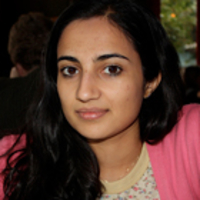Outline by Rachel CuskWith its ambivalence towards plot and character, Rachel Cusk’s Outline gently pushes the very definition of novel. There’s a great deal of conversation and confession—and no shortage of incisive analysis of the narratives men and women construct for themselves to make sense of their lives—but little by way of a storyline. In sum: A British writing instructor teaching in Greece (her name is Faye, but hardly anyone addresses her by it) leads the reader through a series of social interactions, starting with a long conversation with the man she’s seated next to on her flight to Athens. Central to the story of his life are the stories of his three divorces. As he describes what went wrong in each marriage, she listens.Reticent but inquisitive, Faye elicits confessions (on planes and boats; in cafes and restaurants; in the classroom) from others without ever sharing much of herself. It’s only as she recounts the way the people around her tell their stories that the reader begins to learn something about her: In addition to being a teacher, she’s a mother, an ex-wife, and a person, who, for all her curiosity in other people’s adult problems, is herself “not interested in a relationship with a man, not now and probably not ever again.” This comes as a disappointment to the man on the plane (“my neighbor,” as she continues to call him, well after the flight lands), who she rebuffs when he later tries to kiss her on his boat. (She feels “as though the prehistoric creature were wrapping me in its dry bat-like wings.”) Despite its occasional notes of humor, Outline casts a somber mood. Faye’s faith in the “virtues of passivity” make her a keen observer of others, but where her own affairs are concerned, she is the master of evasion. It’s a trait that gives Outline the eerie glow of a photo negative.The Almost Nearly Perfect People: Behind the Myth of the Scandanavian Utopia by Michael Booth Waking up one dark, cold April morning in Copenhagen several years ago, Michael Booth opened the newspaper to discover that Denmark had been named—not for the first time—the happiest place in the world. “The happiest? This wet, dull, flat little country”? he wondered. In fact, Denmark, Norway, Finland, Sweden, and Iceland each regularly get top rankings for quality of life and happiness. But, having experienced Scandinavia’s, “punishing weather … heinous taxes … predictable monoculture …” and “stifling insistence on lowest-common-denominator consensus” firsthand, Booth found these official ranks a bit perplexing. It was time, he decided, to investigate what’s actually driving Scandinavians to report such high levels of satisfaction with life. And so begins a lively exploration that’s part ethnography and part travel guide. From the Danes’ outsized passion for their own flag to the Icelanders’ abiding belief in elves and the Swedes’ weakness for chewing tobacco, Booth is not afraid to generalize and gawk at Scandinavian customs; much of the book’s charm comes from his pointed, rapid-fire assessments of each country’s regional quirks and often surprising collective values. At times, in his haste to explain these nations, Booth (a Brit) falls back on sweeping racial generalizations (of Icelanders, for example, he writes that “their genetic disposition toward high risk and a historic lack of Protestant inhibitions created the perfect climate for a corrupt, nepotistic, antidemocratic economic free-for-all”). Still, at its core The Almost Nearly Perfect People is driven by genuine curiosity and appreciation for a singular part of the world most Americans know very little about—and could stand to learn a thing or two from.Almost Famous Women by Megan Mayhew BergmanNearly forgotten female artists—of assorted mediums—are the subject of Megan Mayhew Bergman’s latest collection of stories, a well-imagined set of unglamorous fictional biographies. The opening story riffs on the lives of conjoined twins Violet and Daisy. Abandoned at a young age by their biological parents, they’ve made a career as stage performers who, against the odds, have mastered the art of survival. Modeled after the real life Hilton sisters, who toured the US as a sideshow act, Violet and Daisy’s story is a sad one of exploitation and destitution. Bergman poignantly imagines their old age: a time when the real-life twins worked as grocery clerks to make ends meet.The Hilton sisters’ lives were touched by equal measures of fame and obscurity; as the title promises, so were the lives of a number of the women portrayed in this collection. Kenyan aviator Beryl Markham (author of West with the Night) gets a short story of her own, as do Dolly Wilde, Oscar’s niece, Edna St. Vincent Millay’s sister Norma, and Lord Byron’s illegitimate daughter Allegra. But the most arresting stories are about more even obscure historical figures, like Joe Carstairs, a domineering lesbian heiress who owns a private island in the Bahamas and spends her days racing boats and seducing actresses like Marlene Dietrich. Bergman’s depiction of Carstairs isn’t flattering. It’s something better: an unsparing portrait of a gruff woman of uncommon ambition and appetites, a woman too powerful to require fame.
Archive
This Week’s Hot Reads: February 9, 2015
Hot Reads
Unlocking the Scandinavian psyche, fictional renderings of real life women, and interpersonal drama in Greece.
Trending Now





